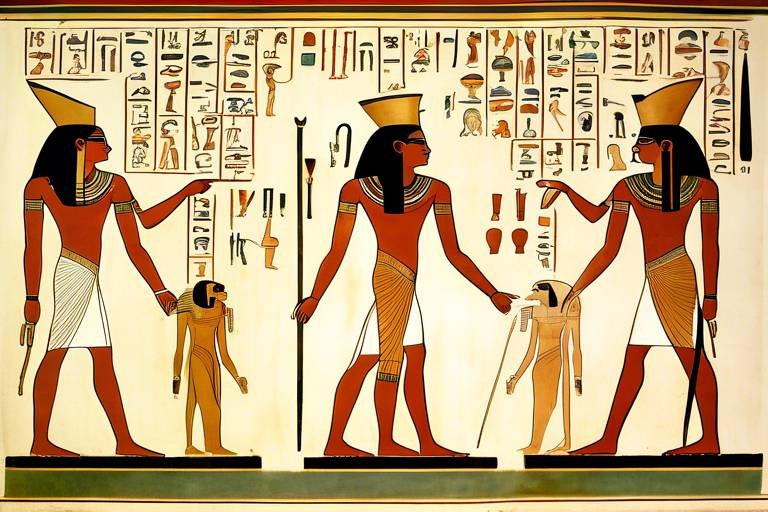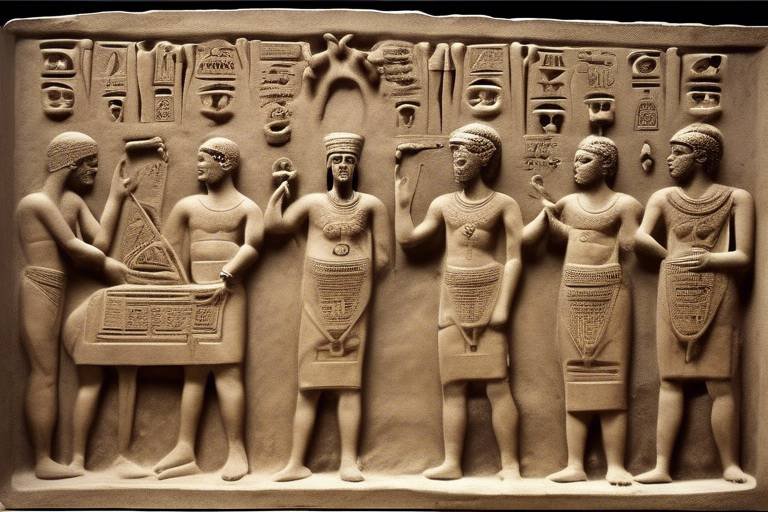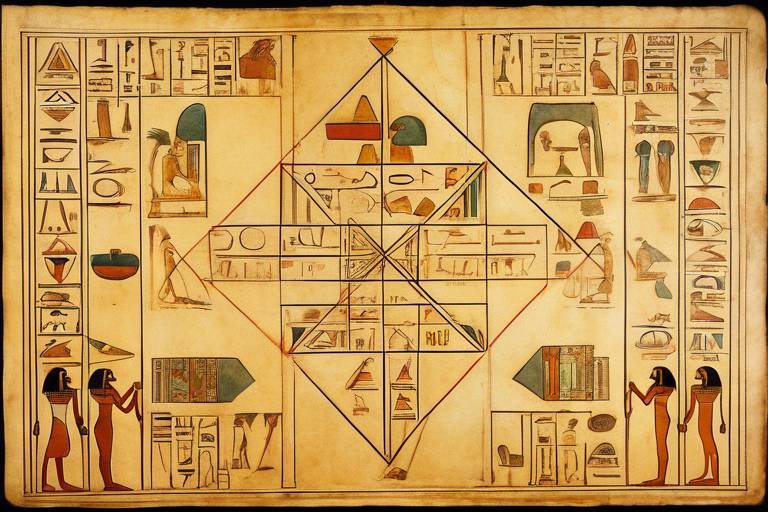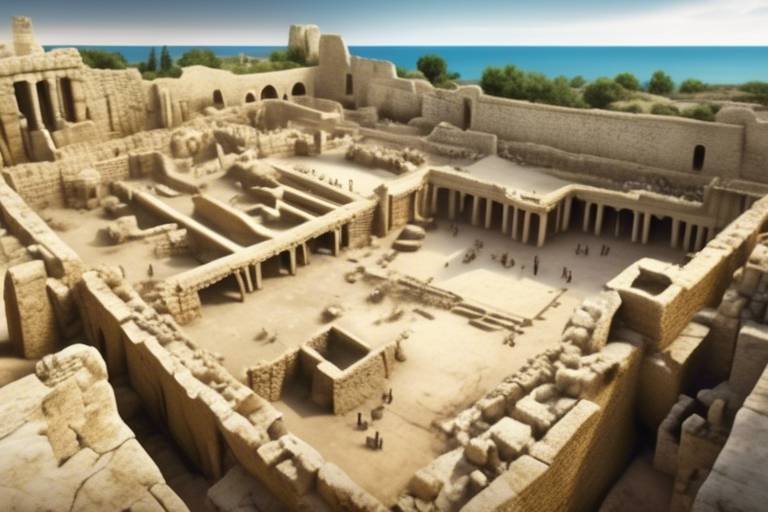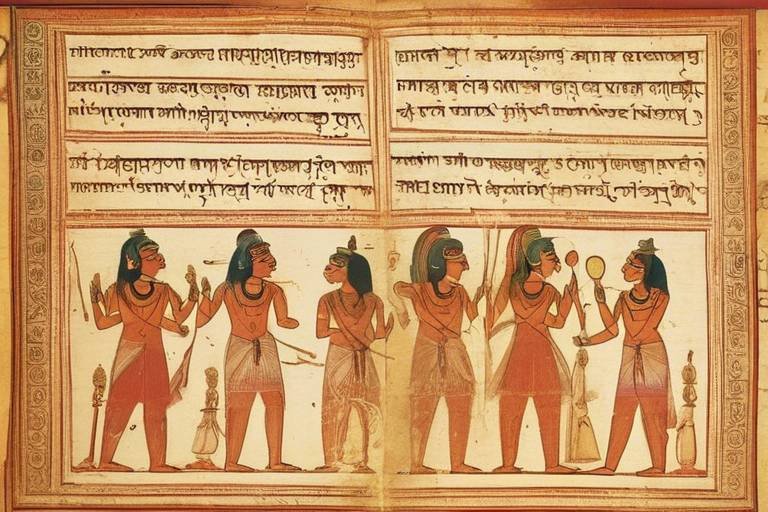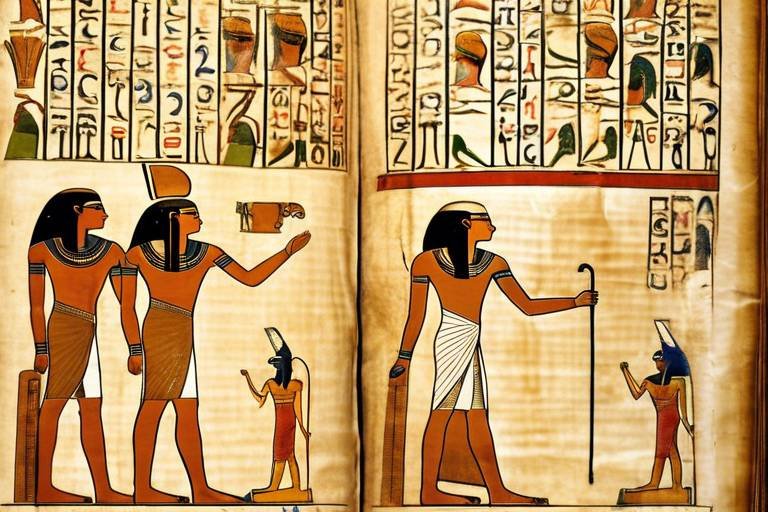The Secrets of Ancient Civilizations' Innovations in Agriculture
Ancient civilizations have long held the key to innovative agricultural practices that continue to shape modern farming methods and sustainability efforts. These ancient societies, ranging from Mesopotamia to Egypt, China to India, and beyond, have left a lasting legacy in the field of agriculture. By delving into their secrets, we can uncover a wealth of knowledge that still resonates in today's agricultural landscape.
One of the earliest cradles of agriculture, Mesopotamia, gave birth to groundbreaking farming methods and irrigation systems that set the stage for agricultural practices worldwide. The Mesopotamians' mastery of water management and crop cultivation laid the foundation for sustainable agriculture and food production.
Ancient Egypt, with its fertile lands nourished by the Nile River, developed advanced farming tools and techniques that revolutionized agriculture. The Egyptians' utilization of irrigation systems and crop rotation strategies showcased their ingenuity and resourcefulness in maximizing crop yields.
In the Andes Mountains, the Inca civilization employed innovative terracing and irrigation systems to cultivate crops at high altitudes, showcasing their engineering prowess in adapting to challenging environments. Their agricultural techniques exemplified a harmonious relationship with nature.
Ancient Chinese agricultural wisdom, with practices such as terrace farming and crop rotation, transformed food production and sustainability. The Chinese emphasis on soil fertility and organic fertilizers paved the way for long-term agricultural success.
Ancient India, known for its diverse crops and sustainable farming practices, prioritized soil health and crop diversity. The use of organic fertilizers and innovative farming methods underscored the Indians' commitment to sustainable agriculture.
The Maya and Aztec civilizations in Mesoamerica developed sophisticated agricultural methods, including the cultivation of the Three Sisters - maize, beans, and squash. Their symbiotic relationship between crops showcased a deep understanding of agricultural ecosystems.
The agricultural innovations of ancient Greece and Rome, from crop rotation to sustainable land management, laid the groundwork for modern farming practices. The introduction of animal husbandry techniques and sustainable agriculture principles highlighted their forward-thinking approach to food production.
Reflecting on the legacy of ancient agricultural innovations, we can see how these civilizations have influenced modern farming practices, sustainability efforts, and the ongoing quest for food security and environmental conservation. By learning from the past, we can continue to cultivate a sustainable future for agriculture.

Ancient Mesopotamia: The Cradle of Agriculture
Exploring the ingenious agricultural techniques and practices developed by ancient civilizations that continue to influence modern farming methods and sustainability efforts today.
Known as the cradle of agriculture, ancient Mesopotamia was a pioneering civilization that revolutionized farming practices. The Mesopotamians introduced innovative techniques that laid the foundation for agricultural development across the ancient world. They were among the first to cultivate crops systematically, utilizing advanced irrigation systems to harness the power of the Tigris and Euphrates rivers for agriculture. The creation of canals and dikes allowed them to control water flow, ensuring consistent crop production throughout the year.

The Agricultural Legacy of Ancient Egypt
Ancient Egypt stands as a testament to the ingenuity and resourcefulness of early agricultural practices. The Nile River, often referred to as the lifeblood of Egypt, played a pivotal role in the agricultural success of this ancient civilization. The annual flooding of the Nile deposited nutrient-rich silt along its banks, creating fertile land ideal for farming. Egyptians developed a sophisticated irrigation system to harness the waters of the Nile, allowing them to cultivate crops year-round.
One of the most remarkable agricultural innovations of ancient Egypt was the use of the shaduf, a simple yet effective device used for lifting water from the river and transferring it to irrigation channels. This technology enabled farmers to efficiently water their fields, leading to increased agricultural productivity. Additionally, the ancient Egyptians were pioneers in the development of advanced farming tools such as the plow, sickle, and winnowing fan, which revolutionized the way crops were cultivated and harvested.
The practice of crop rotation was also prevalent in ancient Egypt, with farmers alternating between different crops to maintain soil fertility and prevent nutrient depletion. This sustainable farming technique not only ensured bountiful harvests but also contributed to the long-term health of the land.
Ancient Egyptians recognized the importance of preserving soil fertility and implemented methods such as composting and the use of organic fertilizers like manure to enrich the soil. By prioritizing soil health and sustainability, they laid the groundwork for modern agricultural practices that prioritize environmental stewardship and conservation.
Moreover, the ancient Egyptians cultivated a diverse range of crops including wheat, barley, flax, and vegetables, showcasing their deep understanding of agricultural diversity and its role in ensuring food security. Their agricultural legacy continues to inspire modern farmers and sustainability advocates, emphasizing the importance of innovation, sustainability, and respect for the land.

Inca Farming Techniques in the Andes
The Inca civilization, known for its remarkable agricultural achievements, developed ingenious farming techniques in the challenging terrain of the Andes Mountains. One of their most notable innovations was the use of terracing, a method of creating flat platforms on steep slopes to cultivate crops. These terraces not only prevented soil erosion but also allowed the Inca to grow a variety of crops at different altitudes, maximizing agricultural productivity in the mountainous region.
In addition to terracing, the Inca utilized sophisticated irrigation systems to channel water from mountain springs to their fields. By carefully managing water flow through canals and aqueducts, they were able to provide consistent moisture to their crops, ensuring successful harvests even in arid environments. This mastery of water management enabled the Inca to thrive in areas where traditional farming methods would have been ineffective.
Furthermore, the Inca practiced crop rotation to maintain soil fertility and prevent nutrient depletion. By rotating different crops in their fields, they could replenish the soil with essential nutrients, leading to sustainable agricultural practices that supported long-term food production. This innovative approach to farming not only increased yields but also preserved the health of the land for future generations.
Another key aspect of Inca farming was their integrated agriculture system, where they cultivated a diverse range of crops that complemented each other's growth. This symbiotic relationship, known as companion planting, involved growing maize, beans, and squash together in a mutually beneficial arrangement known as the Three Sisters. Maize provided a structure for beans to climb, beans fixed nitrogen in the soil for all three plants, and squash acted as a natural mulch, suppressing weeds and retaining moisture.
Overall, the Inca's innovative farming techniques in the Andes Mountains exemplify their advanced understanding of agriculture and environmental sustainability. By harnessing the natural resources of the high-altitude region and implementing sophisticated farming practices, the Inca civilization achieved remarkable agricultural success in a challenging landscape.

Ancient Chinese Agricultural Wisdom
Ancient Chinese agricultural practices were characterized by innovation and wisdom, setting the stage for sustainable farming techniques that are still relevant today. One of the key techniques introduced by the ancient Chinese was crop rotation, a method that allowed farmers to maintain soil fertility and prevent the depletion of nutrients. By alternating the crops planted in a particular field, the soil could naturally replenish its nutrients, leading to healthier and more productive harvests.
In addition to crop rotation, terrace farming was another significant practice employed by the ancient Chinese. The use of terraces on hilly terrain allowed for efficient water management and soil conservation, maximizing arable land for cultivation. This method not only prevented soil erosion but also facilitated irrigation and drainage, crucial for sustaining crops in varying weather conditions.
Furthermore, the ancient Chinese were pioneers in utilizing fertilizers to enhance soil fertility and crop yields. By incorporating organic materials such as compost, manure, and crop residues into the soil, they were able to enrich the land with essential nutrients, promoting healthy plant growth and bountiful harvests.
The holistic approach to agriculture taken by the ancient Chinese emphasized the interconnectedness of nature and farming practices. By observing the natural cycles and rhythms of the environment, they developed a deep understanding of how to work in harmony with the land, fostering sustainability and long-term agricultural success.

The Agricultural Marvels of Ancient India
Ancient India stands as a beacon of agricultural marvels, showcasing a rich tapestry of innovative practices that have left a lasting impact on modern farming techniques. One of the key advancements attributed to ancient Indian agriculture is the development of diverse crop cultivation. Ancient Indian farmers cultivated a wide variety of crops, ranging from grains like rice and wheat to pulses, fruits, and vegetables. This emphasis on crop diversity not only ensured food security but also enriched the soil by preventing nutrient depletion.
Moreover, ancient Indian agricultural practices prioritized sustainability, with farmers employing organic fertilizers such as compost and animal manure to enhance soil fertility. By harnessing natural resources and employing eco-friendly farming methods, ancient Indian farmers were able to maintain the productivity of their lands for generations to come. This sustainable approach to agriculture not only sustained communities but also nurtured a harmonious relationship between humans and the environment.
Another remarkable aspect of ancient Indian agriculture was the utilization of traditional knowledge in farming techniques. Farmers in ancient India practiced terrace farming, a method that involved creating flat steps on hilly terrain to cultivate crops. This ingenious technique allowed farmers to maximize arable land in regions with challenging topography, showcasing their ingenuity and resourcefulness.
Ancient Indian agriculture also embraced the concept of agroforestry, integrating trees and shrubs into agricultural landscapes to enhance biodiversity and soil health. This holistic approach to farming not only provided additional sources of food, timber, and medicine but also contributed to ecosystem resilience and climate adaptation.
Furthermore, the ancient Indians were pioneers in water management, developing sophisticated irrigation systems such as canals, reservoirs, and wells to harness water resources for agriculture. The efficient utilization of water resources enabled farmers to cultivate crops year-round, even in arid regions, ensuring a steady food supply and bolstering agricultural productivity.
In conclusion, the agricultural marvels of ancient India serve as a testament to the wisdom and innovation of early farmers, whose practices continue to inspire sustainable agriculture and environmental stewardship today. By embracing diversity, sustainability, traditional knowledge, and water management, ancient Indian agriculture laid the foundation for resilient and productive farming systems that endure through the ages.

Mesoamerican Agricultural Techniques
The Mesoamerican civilizations, particularly the Maya and Aztec peoples, were masters of agricultural techniques that allowed them to thrive in challenging environments. One of the most notable practices was the cultivation of maize, beans, and squash in a symbiotic relationship known as the Three Sisters. This agricultural system involved planting maize, beans, and squash together in the same field, with each plant providing unique benefits to the others.
Maize provided a sturdy structure for the beans to climb, while the beans enriched the soil with nitrogen, benefiting all three crops. Squash plants acted as a natural mulch, suppressing weeds and retaining moisture in the soil. This intercropping method not only maximized the use of limited space but also promoted soil health and fertility through natural processes.
In addition to the Three Sisters technique, Mesoamerican civilizations were also adept at utilizing advanced irrigation systems, terracing, and agroforestry practices. The Maya, for example, constructed intricate irrigation canals and reservoirs to manage water resources efficiently in their rainforest environment. They also practiced terracing on hilly terrain to prevent soil erosion and increase arable land for cultivation.
Furthermore, the Aztecs developed chinampas, artificial islands made of mud and vegetation, in the shallow waters of Lake Texcoco. These floating gardens allowed for intensive farming of crops such as maize, beans, and chilies, demonstrating their ingenuity in adapting to the challenges of their marshy surroundings.
The agricultural techniques of the Mesoamerican civilizations not only sustained their populations but also laid the groundwork for modern sustainable farming practices. By harmonizing with the natural environment and maximizing the benefits of diverse plant species, these ancient agricultural innovations continue to inspire agriculturalists and environmentalists today.

Three Sisters.
The concept of the Three Sisters represents a symbiotic agricultural system practiced by the Maya and Aztec civilizations in Mesoamerica. This innovative technique involves the cultivation of three main crops - maize, beans, and squash - in close proximity to one another, each plant providing unique benefits to the others.
Maize, or corn, serves as the "big sister" in this trio, providing a sturdy stalk for the beans, the "middle sister," to climb. In return, the beans fix nitrogen in the soil, enhancing its fertility and providing essential nutrients for all three crops. The squash, known as the "little sister," acts as a natural mulch, suppressing weed growth and retaining moisture in the soil.
This intercropping method not only maximizes the use of limited arable land but also promotes soil health and biodiversity. The Three Sisters technique exemplifies the ancient civilizations' deep understanding of ecological balance and sustainable farming practices, showcasing their ingenuity in harmonizing with nature to ensure bountiful harvests.

When it comes to the origins of agriculture, one cannot overlook the pivotal role played by ancient Mesopotamia. This region, often referred to as the "Cradle of Civilization," was also the cradle of agriculture. Mesopotamians were among the first to develop sophisticated farming methods and irrigation systems that laid the groundwork for agricultural practices seen across the ancient world. By harnessing the power of the Tigris and Euphrates rivers, they created an intricate network of canals and dikes to control water flow and ensure consistent crop yields. Their innovative approach to agriculture not only transformed the landscape but also paved the way for future civilizations to thrive and grow sustenance in abundance.
One of the most remarkable aspects of Mesopotamian agriculture was their use of advanced tools and techniques, such as the wooden plow and the sickle, which revolutionized farming practices. These inventions allowed them to cultivate a variety of crops, including barley, wheat, and legumes, on a large scale. Moreover, the Mesopotamians were pioneers in the concept of crop rotation, a practice that helped maintain soil fertility and prevent depletion of nutrients. Their agricultural legacy continues to inspire modern farmers and researchers striving to achieve sustainable food production methods that are both efficient and environmentally friendly.

Ancient Greek and Roman Agricultural Innovations
Ancient Greek and Roman civilizations were at the forefront of agricultural innovation, introducing practices that have left a lasting impact on farming techniques to this day. The Greeks and Romans recognized the importance of sustainable land management and implemented methods such as crop rotation to maintain soil fertility and maximize crop yields. They also developed advanced animal husbandry techniques, breeding livestock for specific traits and purposes.
One of the key contributions of the ancient Greeks and Romans to agriculture was the concept of sustainable farming practices. They understood the importance of preserving the land for future generations and implemented strategies to ensure the long-term productivity of their fields. By rotating crops seasonally, they were able to prevent soil depletion and maintain a healthy growing environment.
In addition to crop rotation, the ancient Greeks and Romans excelled in animal husbandry, selectively breeding livestock for desired characteristics. This careful breeding led to the development of stronger, more productive animals that could be used for plowing fields, transportation, and food production. Livestock played a crucial role in the agricultural economy of these civilizations, providing resources essential for daily life.
The agricultural innovations of the ancient Greeks and Romans extended beyond the fields and pastures to include advancements in irrigation systems. They constructed aqueducts and canals to transport water from rivers and lakes to arid regions, enabling the cultivation of crops in areas that would otherwise be unsuitable for farming. These sophisticated irrigation systems revolutionized agriculture in the ancient world, allowing for increased food production and population growth.
Furthermore, the Greeks and Romans were pioneers in the development of agricultural tools and machinery. They crafted implements such as plows, sickles, and hoes to streamline the planting and harvesting processes, increasing efficiency and productivity on the farm. These tools represented a significant leap forward in agricultural technology, enabling farmers to work more effectively and cultivate larger areas of land.
In conclusion, the agricultural innovations of the ancient Greek and Roman civilizations have had a profound impact on modern farming practices. Their emphasis on sustainability, crop rotation, animal husbandry, irrigation systems, and agricultural tools laid the groundwork for the agricultural advancements that continue to shape our food production methods today.

The Legacy of Ancient Agricultural Innovations
Ancient civilizations have left a lasting legacy in the realm of agriculture, with their innovative techniques and practices continuing to influence modern farming methods and sustainability efforts. The agricultural innovations of ancient Mesopotamia, Egypt, China, India, the Inca civilization, Mesoamerica, Greece, and Rome have paved the way for the development of agricultural practices that we still utilize today.
Ancient civilizations such as Mesopotamia, often referred to as the cradle of agriculture, introduced groundbreaking farming methods and irrigation systems that laid the foundation for agricultural practices across the ancient world. Their mastery of irrigation allowed for the cultivation of crops in arid regions, showcasing their ingenuity in harnessing water resources for agricultural purposes.
Ancient Egypt, with its reliance on the Nile River, developed advanced irrigation techniques that enabled the flourishing of agriculture in an otherwise desert landscape. The use of the Nile's annual flooding for irrigation, coupled with the development of sophisticated farming tools, allowed the ancient Egyptians to achieve remarkable agricultural productivity.
The Inca civilization, nestled in the Andes Mountains, demonstrated remarkable agricultural engineering with their terracing and irrigation systems. By cultivating crops at high altitudes through innovative farming techniques, the Incas showcased their ability to adapt to challenging environmental conditions and maximize agricultural productivity.
Ancient Chinese agricultural practices, including crop rotation, terrace farming, and the use of fertilizers, revolutionized food production and sustainability. The Chinese emphasis on sustainable farming methods and soil fertility management set a precedent for environmentally conscious agricultural practices that are still relevant today.
Ancient India's agricultural advancements, such as crop diversity, sustainable farming practices, and the use of organic fertilizers, emphasized the importance of soil health and biodiversity in agricultural systems. The Indian agricultural heritage highlights the significance of harmonizing agricultural practices with natural ecosystems for long-term sustainability.
The Maya and Aztec civilizations in Mesoamerica developed sophisticated agricultural methods, including the cultivation of maize, beans, and squash in a symbiotic relationship known as the Three Sisters. Their innovative agricultural practices exemplified the importance of crop diversity and intercropping for enhancing soil fertility and agricultural productivity.
The agricultural practices of ancient Greece and Rome, characterized by crop rotation, animal husbandry techniques, and sustainable land management, laid the groundwork for modern agricultural practices. The concept of sustainable agriculture, as advocated by the ancient Greeks and Romans, continues to guide contemporary efforts towards food security and environmental conservation.
In conclusion, the legacy of ancient agricultural innovations endures in modern farming practices, sustainability efforts, and the ongoing quest for food security and environmental conservation. By drawing inspiration from the ingenuity of ancient civilizations, we can continue to advance agricultural practices that are not only productive but also environmentally sustainable.
Frequently Asked Questions
- What are some key agricultural innovations credited to ancient civilizations?
Ancient civilizations contributed various agricultural innovations such as irrigation systems, crop rotation, terrace farming, and sustainable practices.
- How did ancient Mesopotamia impact modern agriculture?
Mesopotamia is known as the cradle of agriculture for its pioneering farming methods and irrigation systems that laid the foundation for agricultural practices worldwide.
- What agricultural techniques were unique to the Inca civilization?
The Inca civilization excelled in terracing and irrigation systems to cultivate crops at high altitudes in the Andes Mountains, showcasing their agricultural engineering prowess.
- What were some notable farming practices of ancient China?
Ancient China introduced crop rotation, terrace farming, and organic fertilizers, revolutionizing food production and sustainability in ancient times.
- How did ancient civilizations like the Maya and Aztecs contribute to agriculture?
The Maya and Aztecs practiced sophisticated agricultural methods such as the Three Sisters symbiotic cultivation of maize, beans, and squash.
- What role did ancient Greece and Rome play in agricultural advancements?
Ancient Greeks and Romans introduced concepts like crop rotation, animal husbandry, and sustainable land management, influencing modern farming practices.
- How have ancient agricultural innovations impacted modern farming and sustainability efforts?
Ancient agricultural innovations continue to shape modern farming practices, sustainability efforts, and the pursuit of food security and environmental conservation.






